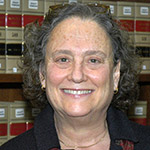The back-and-forth decisions of a Utah juvenile court judge this week regarding the foster child of a lesbian couple expose the possible limits of the Supreme Court’s ruling this summer on gay marriage, says a national expert in family law at Washington University in St. Louis.

Utah juvenile court judge Scott Johansen first ruled that the 1-year-old foster child of a lesbian couple must be removed from the couple’s home and sent to “a more traditional home,” then reversed himself a day later.
No social science data exist to support the judge’s belief, said Susan F. Appleton, JD, the Lemma Barkeloo and Phoebe Couzins Professor of Law, noting both orders reflect the judge’s concern for the well-being of children reared by LGBT parents.
“Other courts have examined the data and have concluded that laws barring gays and lesbians from adopting have no rational basis,” she said. “Some reports say that the couple, Beckie Peirce and April Hoagland, who are legally married, planned to adopt the child. Utah has a statute that prohibits unmarried couples from adopting.
“Many authorities read that statute as a vehicle for preventing same-sex couples from adopting because they couldn’t marry. The Supreme Court’s marriage equality case, Obergefell v. Hodges, solves that problem.”
Nonetheless, Appleton said, the controversy in Utah exposes Obergefell’s possible limits.
“The Supreme Court in Obergefell assumed that the LGBT couples have children, and that allowing same-sex parents to marry would improve the lives of their children,” she said. “But the Supreme Court said nothing explicit about removing barriers that LGBT adults might encounter in parentage, foster care or adoption laws.
“Nor did Obergefell decide what sort of review the Equal Protection Clause requires for state action that discriminates on the basis of sexuality,” she said.
Regardless, Appleton said, Obergefell’s language about family, dignity and equality send strong signals that the Utah judge had initially acted unconstitutionally.